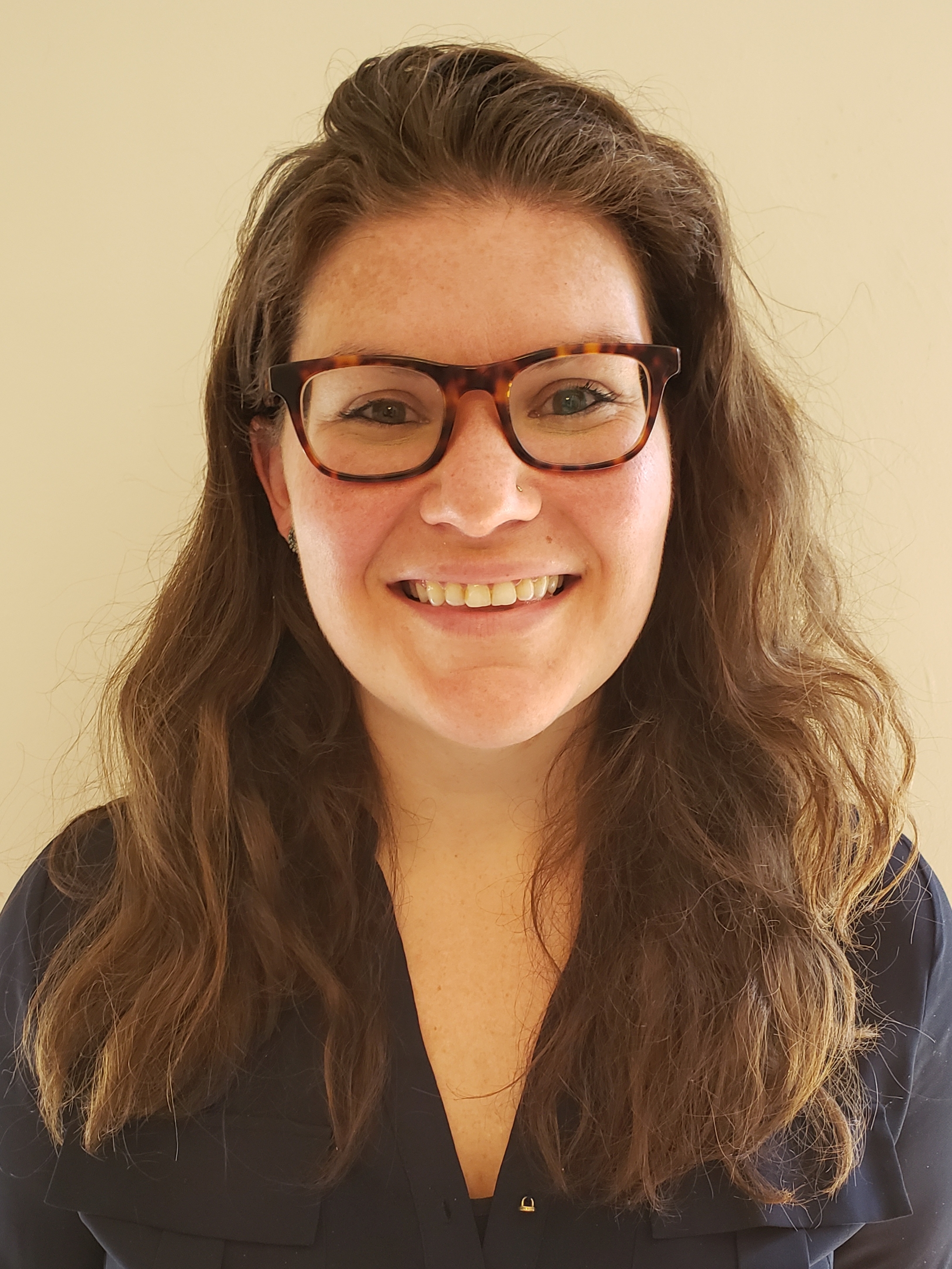Child / Adolescent - Anxiety
The Patient-Reported Outcomes Measurement Information System (PROMIS) Pediatric and Parent-Proxy Short Forms for Anxiety: Psychometric Properties in the Kids FACE FEARS Sample
(PS9-D78) The Patient-reported Outcomes Measurement Information System (PROMIS) Pediatric and Parent-proxy Short Forms for Anxiety: Psychometric Properties in the Kids FACE FEARS Sample
- GF
Gabrielle Freitag, B.A.
Clinical Psychology Doctoral Student
Florida International University
Miami, Florida - HS
Hanan Salem, PhD
Doctoral Student
University of California, Santa Barbara
Goleta, California 
Kristina Conroy, M.S.
Clinical Psychology Doctoral Student
Florida International University
Miami, Florida- CB
Carolina Busto, M.S.
Research Coordinator
Florida International University
Miami, Florida - MA
Molly Adrian, Ph.D.
Assistant Professor; Attending Clinical Psychologist
University of Washington; Seattle Children's Hospital
Seattle, Washington - CB
Christina Borba, M.P.H., Ph.D.
Assoc. Prof.; Vice Chair of Research; Director, Global & Local Center for Mental Health Disparities
Boston Medical Center, Boston University School of Medicine
Boston, Massachusetts - AB
Amelia Brandt, M.P.H., MSW, Other
Senior Research Program Coordinator II, BEAD Core Faculty Lead
Johns Hopkins University School of Medicine; Johns Hopkins Medical Institute
Baltimore, Maryland 
Annie W. Dantowitz, LICSW
Group Director of the Child and Adolescent Program
Boston University Center for Anxiety and Related Disorders
Boston, Massachusetts- LF
Lisa Fortuna, M.P.H., M.D.
Chief of Psychiatry and Vice-Chair; Associate Professor of Clinical Psychiatry
Zuckerberg San Francisco General Hospital/UCSF
San Francisco, California .jpg)
Jami M. Furr, Ph.D.
Senior Psychologist
Florida International University
Weston, Florida- LM
Leslie Miller, M.D.
Associate Professor of Psychiatry and Behavioral Sciences
Johns Hopkins University School of Medicine
Baltimore, Maryland - KM
Kathleen Myers, M.D.
Associate Professor; Child and Adolescent Psychiatry Specialist
University of Washington School of Medicine; Seattle Children's Hospital
Seattle, Washington - RP
Rheanna Platt, M.P.H., M.D.
Assistant Professor of Psychiatry and Behavioral Sciences
Johns Hopkins University School of Medicine
Baltimore, Maryland - MP
Michelle Porche, Other
Associate Professor in Psychiatry
University of California San Francisco
Berkeley, California - SR
Sara Rivero-Conil, Psy.D.
Clinical Manager and Pediatric Psychologist
Nicklaus Children's Hospital
Miami, Florida - PS
Philip Shumway, B.A.
Industrial and Organizational Psychology Graduate Student
University of Tulsa
Tulsa, Oklahoma - AS
Andrea Spencer, M.D.
Assistant Professor of Psychiatry
Boston University School of Medicine
Boston, Massachusetts - HS
Haniya Syeda, M.P.H.
Research Project Manager
Boston Medical Center
Boston, Massachusetts - DM
Dana McMakin, Ph.D.
Associate Professor of Clinical Science and Cognitive Neuroscience
Florida International University
Miami, Florida .jpg)
Donna B. Pincus, Ph.D.
Professor, Department of Psychological and Brain Sciences
Boston University
Boston, Massachusetts.jpg)
Jonathan Comer, Ph.D.
Professor of Psychology and Psychiatry
Florida International University
Miami, Florida- JS
- JL
Julia A. Lejeune, B.A.
Graduate Student in Clinical Psychology
University of Illinois at Chicago
CHICAGO, Illinois
Author(s)
Co-Author(s)
Background: Anxiety disorders constitute one of the most common classes of psychological disorders affecting youth, with early onset predicting worse outcomes. Early and accurate assessment of youth anxiety is therefore critical. Despite progress in the development of valid and reliable assessments of youth anxiety, the majority of such supported assessments were not created with the constraints of typical care settings in mind. There is tremendous need for brief, non-commercial youth- and caregiver-report questionnaires of youth anxiety for use in clinical practice. The pediatric and parent proxy short forms of the Patient Reported Outcome Measurement System (PROMIS) Anxiety scale (8a v2.0) is a pair of free, brief, and publicly accessible measures of youth- and caregiver-reported anxiety in children and adolescents. Research to date has shown strong psychometric properties when the measure is used in medical and community samples. However, no study has examined psychometric properties of the pediatric and parent proxy short forms of the PROMIS Anxiety scale in a concentrated sample of youth with anxiety. We offer the first psychometric evaluation of the pediatric and parent proxy short forms of the PROMIS Anxiety scale in a sample of treatment-seeking youth with anxiety.
Methods: The present study leveraged data from the Kids FACE FEARS Trial – a multisite trial comparing the effectiveness of therapist-led vs. self-administered treatment for anxiety among youth presenting at pediatric health care settings. Families were recruited from four U.S. regions: Miami, Boston, Seattle, and Baltimore. Analyses were conducted on a subset of the first 265 families (mean age=11.14 years; 59.9% female) assessed at baseline.
Results: On average, youth in the present sample scored roughly 1-1.5 SD above the general population PROMIS mean for youth anxiety. Factor structure: CFA of youth self-reports supported an adjusted one-factor model that accounted for associations between items 2 & 4 and items 3 & 6, and CFA in parent-reports supported an adjusted one-factor model that accounted for associations between items 1 & 3, items 2 & 6, and items 1 & 2. Global fit indices across both informants revealed good model fits, with CFI, RMSEA, and SRMR falling in the “good” ranges. Internal consistency: Pediatric and parent proxy short forms indicated good internal consistency, with no indication of redundancy across items or need to shorten the scale (pediatric α = 0.89; parent proxy α = 0.88). Convergent validity: Both pediatric and parent proxy short forms of the PROMIS Anxiety scale evidenced medium-to-large associations with the supported measures of youth anxiety-related impairment. Cross-informant reliability: Pediatric and parent proxy short forms showed a medium-sized correlation with one another (partial r = 0.48, p < .001).
Conclusion: Results showcase the first psychometric evaluation of the pediatric and parent proxy short form PROMIS Anxiety Scale among treatment-seeking youth with anxiety and highlight the measure’s supported utility within typical care settings for youth anxiety.

